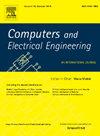Energy management of networked energy hub considering risk assessment and cyber security: A deep reinforcement learning approach
IF 4
3区 计算机科学
Q1 COMPUTER SCIENCE, HARDWARE & ARCHITECTURE
引用次数: 0
Abstract
This research presents a comprehensive analysis of data-driven energy management within the framework of a networked energy hub (NEH), focusing on three objective functions that account for various uncertainties, alongside risk assessment and cybersecurity considerations. The primary objectives of the initial phase encompass the optimal operation of the NEH, which entails maximizing subscriber engagement through integrated demand response initiatives that respond to wholesale and retail market price signals, thereby altering subscriber consumption behaviors, and enhancing the operational efficiency of energy storage systems (ESS) to mitigate operational expenses. The subsequent phase aims to minimize environmental pollution costs, while the final phase is dedicated to evaluating risk costs and conducting a cybersecurity assessment. The model put forward, which utilizes the K-means clustering methodology alongside a probabilistic framework for power generation sources, ESS units, and loads, is articulated through the application of time sequence matrices, auto-correlation matrices, and cross-correlation matrices. This model is constructed using the deep reinforcement learning algorithm, with the soft actor-critic architecture employed to ascertain optimal control strategies. This investigation has been assessed across three scenarios. The first scenario shows the optimal operation of NEH, the second scenario is the same as the first scenario plus IDR performance, and the third scenario is the same as the second scenario with the optimal participation of ESSs. The outcomes show a 15.14 % reduction in total operation costs in the second scenario and 19.49 % in the third scenario.
考虑风险评估和网络安全的网络化能源中心能源管理:一种深度强化学习方法
本研究在网络能源中心(NEH)框架内对数据驱动的能源管理进行了全面分析,重点关注了考虑各种不确定性的三个目标函数,以及风险评估和网络安全考虑。初始阶段的主要目标包括NEH的最佳运行,这需要通过对批发和零售市场价格信号做出响应的综合需求响应计划来最大化用户参与度,从而改变用户消费行为,并提高储能系统(ESS)的运行效率,以降低运营费用。后续阶段旨在将环境污染成本降至最低,而最后阶段则致力于评估风险成本并进行网络安全评估。该模型利用k均值聚类方法以及发电源、ESS单元和负载的概率框架,通过应用时间序列矩阵、自相关矩阵和相互关联矩阵进行阐述。该模型采用深度强化学习算法构建,并采用软行为者评价体系结构确定最优控制策略。这项调查在三种情况下进行了评估。第一种情景为NEH的最优运行,第二种情景与第一种情景相同,再加上IDR的性能,第三种情景与第二种情景相同,再加上ess的最优参与。结果表明,在第二种方案中,总运营成本降低了15.14%,在第三种方案中,总运营成本降低了19.49%。
本文章由计算机程序翻译,如有差异,请以英文原文为准。
求助全文
约1分钟内获得全文
求助全文
来源期刊

Computers & Electrical Engineering
工程技术-工程:电子与电气
CiteScore
9.20
自引率
7.00%
发文量
661
审稿时长
47 days
期刊介绍:
The impact of computers has nowhere been more revolutionary than in electrical engineering. The design, analysis, and operation of electrical and electronic systems are now dominated by computers, a transformation that has been motivated by the natural ease of interface between computers and electrical systems, and the promise of spectacular improvements in speed and efficiency.
Published since 1973, Computers & Electrical Engineering provides rapid publication of topical research into the integration of computer technology and computational techniques with electrical and electronic systems. The journal publishes papers featuring novel implementations of computers and computational techniques in areas like signal and image processing, high-performance computing, parallel processing, and communications. Special attention will be paid to papers describing innovative architectures, algorithms, and software tools.
 求助内容:
求助内容: 应助结果提醒方式:
应助结果提醒方式:


